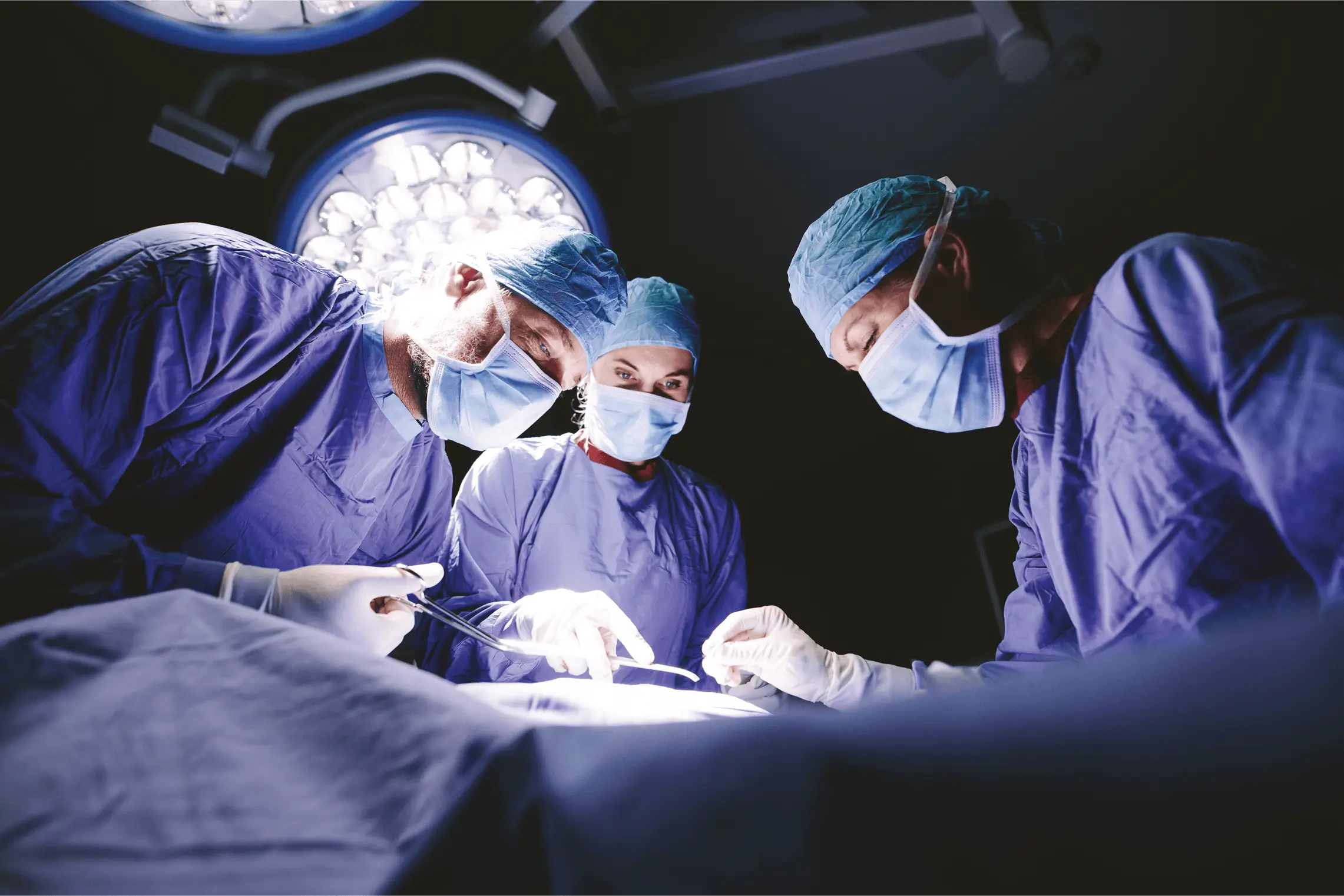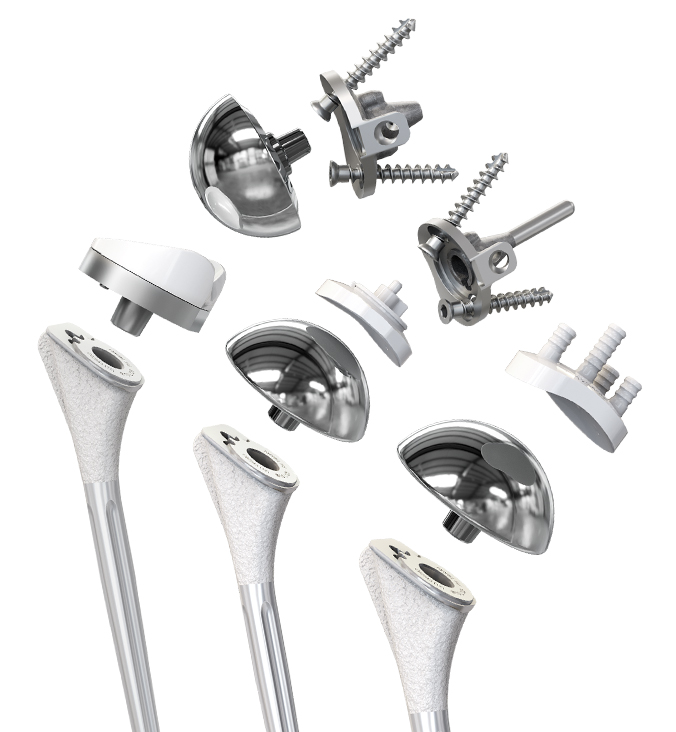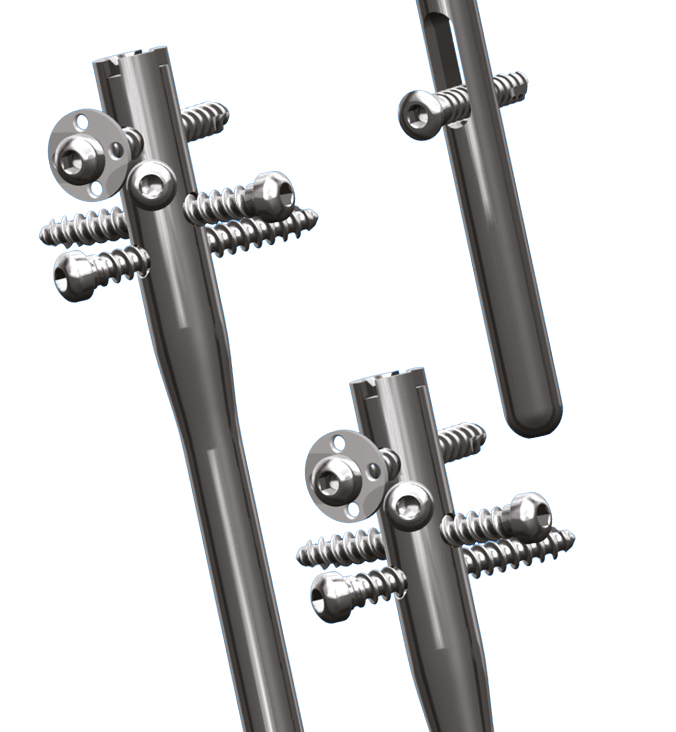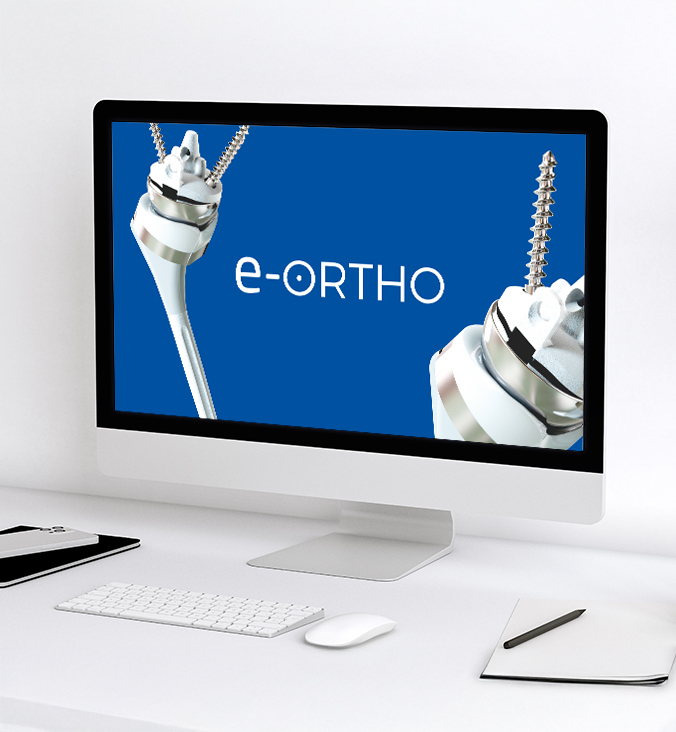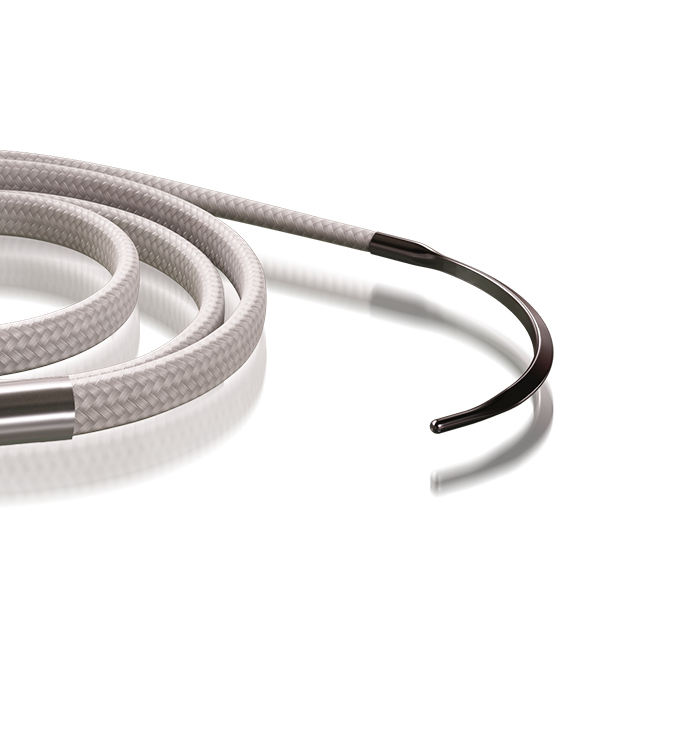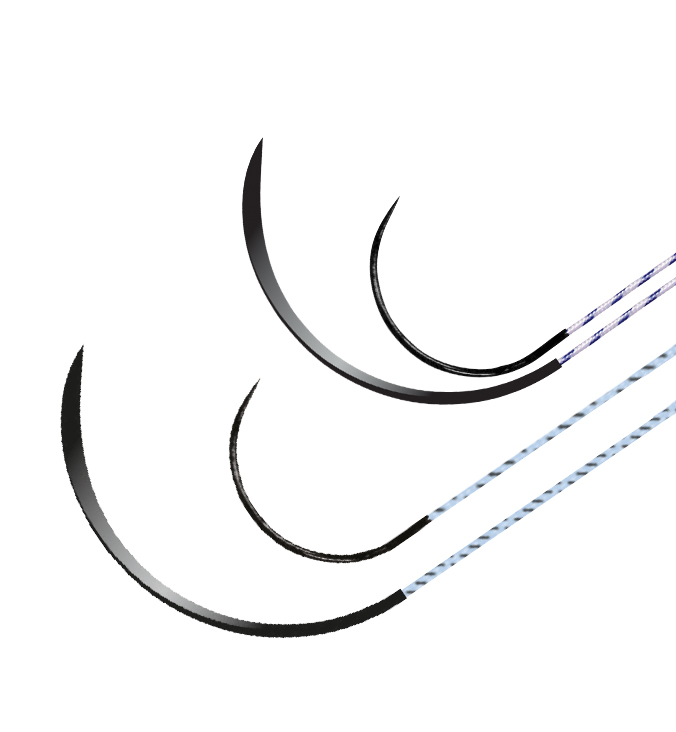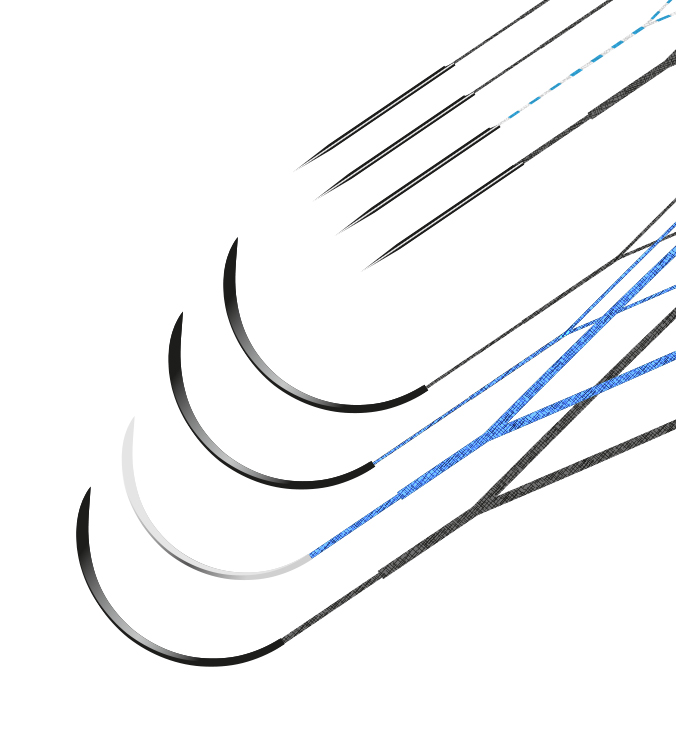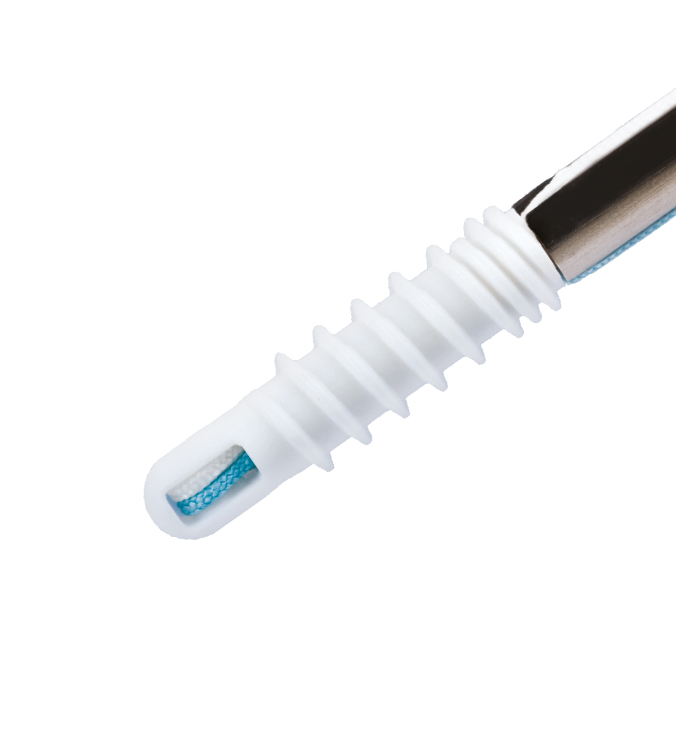Prothèse d’épaule ARROW
Le système ARROW propose un ensemble de solutions permettant aux opérateurs la plus grande flexibilité dans leur arsenal thérapeutique.
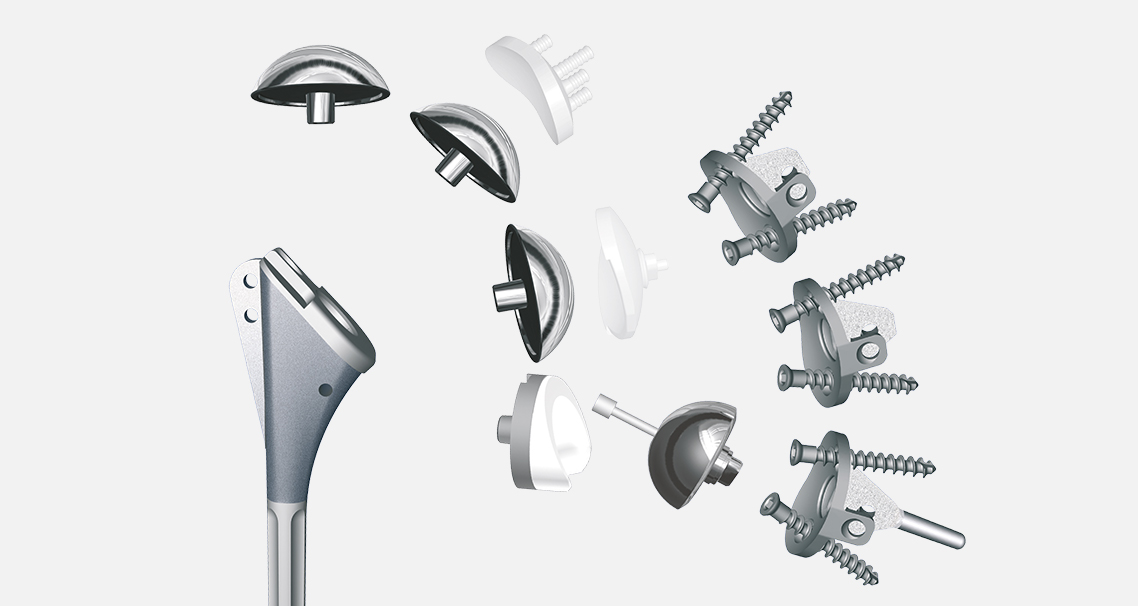
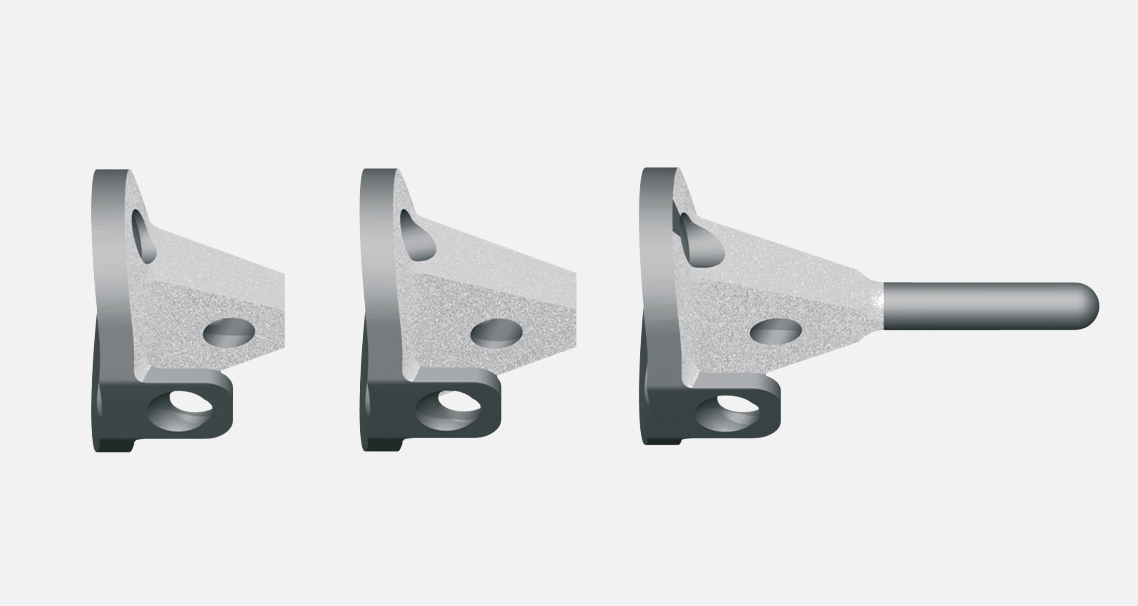
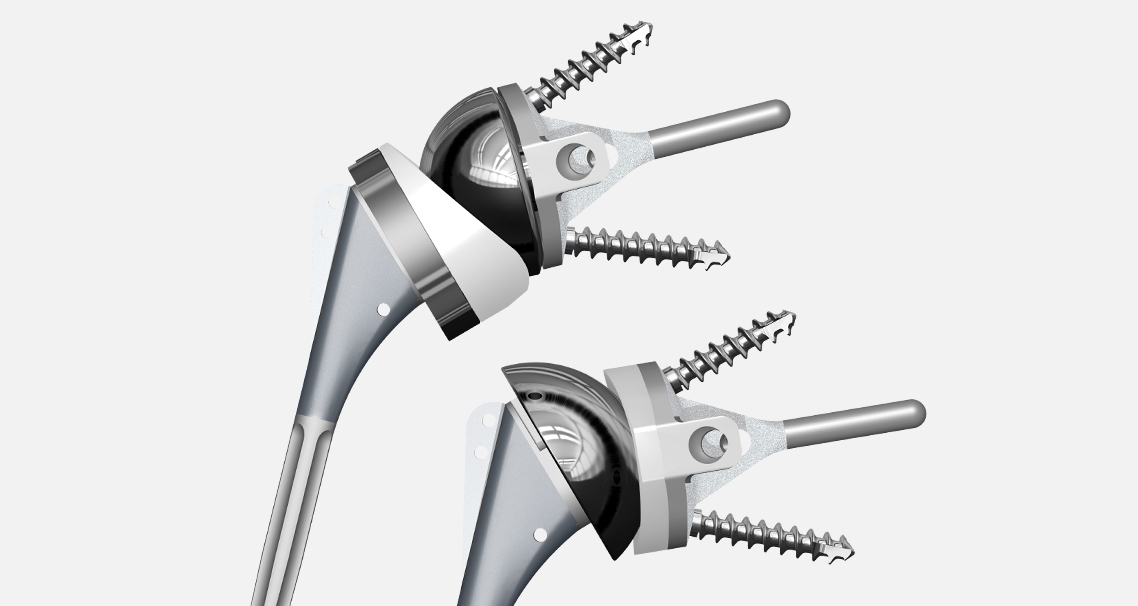
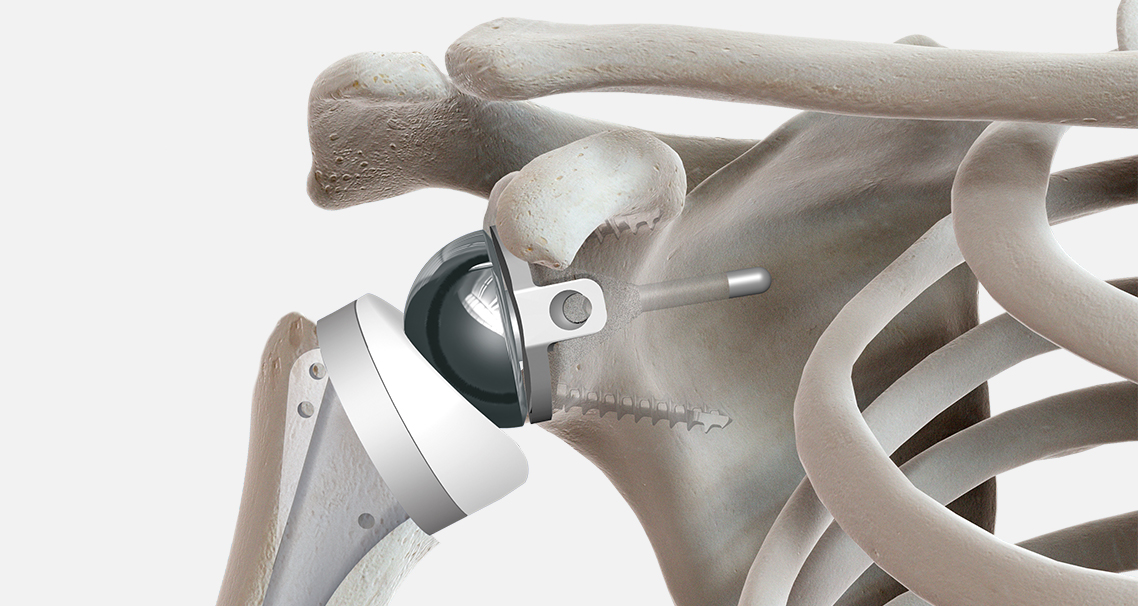
Prothèse d’épaule ARROW
Le système ARROW propose un ensemble de solutions permettant aux opérateurs la plus grande flexibilité dans leur arsenal thérapeutique.
Concept
Dès 2003, la prothèse ARROW figure parmi les premiers systèmes universels dans l’arthroplastie de l’épaule. Il permet aux chirurgiens d’implanter une prothèse anatomique ou inversée avec le même ancillaire.
Avec la même tige, à sceller ou non, il peut réaliser une prothèse humérale simple, une prothèse anatomique avec glène à 4 plots (à cimenter) ou métal-back sans ciment, et enfin une prothèse inversée.
L’ancillaire contient quatre paniers d’instrumentation.
En fonction de l’état clinique du patient, le chirurgien peut être amené à réviser la prothèse.
Tout en conservant la tige humérale, il peut :
- convertir une prothèse humérale simple en prothèse inversée,
- convertir une prothèse totale anatomique en prothèse inversée.
Tout en conservant la tige humérale et la glène métal-back, il peut :
- convertir une prothèse anatomique avec glène métal-back en prothèse inversée.
L’ancillaire unique, pour les 2 types de prothèses est rationnel, et permet aux techniques d’être reproductibles.
Indications
Les indications de prothèses d’épaule concernent la chirurgie programmée (arthrose ou omarthrose, polyarthrite, séquelles de fracture) et la chirurgie traumatologique (fracture complexe de l’extrémité supérieure de l’humérus).
L’état de la coiffe des rotateurs, l’âge du patient, l’état du stock osseux déterminent le type de prothèse à implanter.
Caractéristiques
PROTHÈSE ANATOMIQUE
Tiges / 4 tailles / angle fixe à 135° :
- diamètre 8 mm, longueur 120,
- diamètre 10 mm longueur 125,
- diamètre 12 mm longueur 130,
- diamètre 14 mm longueur 135,
- matériau : titane.
Jeux de têtes centrées et excentrées :
- voir les tailles sur la documentation ARROW,
- matériau : inox.
Glène à cimenter :
- glène à 4 plots,
- 3 tailles (44, 46, 48) + 1 en option (50),
- matériau : UHMWPE (Ultra High Molecular Weight PolyEthylene).
Insert glénoïdien :
- 3 tailles (44, 46, 48),
- matériau : UHMWPE.
Embase de glène métal-back avec quille et patte antéro-postérieure :
- 5 tailles (44S, 44, 44R, 46, 48),
- matériau : titane recouvert de HAP (Hydroxyapatite).
PROTHÈSE INVERSÉE
Tiges / 4 tailles / angle fixe à 135° :
- diamètre : 8 mm, longueur 120,
- diamètre : 10 mm longueur 125,
- diamètre : 12 mm longueur 130,
- diamètre : 14 mm longueur 135,
- matériau : titane.
Insert huméral standard :
- 3 diamètres (36, 39, 42),
- 3 hauteurs (00, +05, +10),
- matériau : UHMWPE monté sur métal-back, impacté par cône morse.
Embase de glène métal-back avec quille et patte antéro-postérieure :
- 5 tailles (44S, 44, 44R, 46, 48),
- matériau : titane recouvert de HAP (Hydroxyapatite).
Glénosphère :
- 3 tailles (36, 39, 42),
- matériau : Inox.
ANCILLAIRE UNIVERSEL : ANATOMIQUE ET INVERSÉE
- 4 paniers
Publications
- Valenti, P. and J.D. Werthel, Benefits of a base plate with a long peg in RSA to adress glenoid bone loss : retrospective review of 50 cases with minimum 2 years follow-up. PISC 2017 – Current concepts on shoulder arthroplasty, 2017. 2: p. p. 159-163.
- Valenti, P., et al., How to manage an unstable reverse total shoulder arthroplasty : retrospective review of 25 cases? . PISC 2017 – Current concepts on shoulder arthroplasty, 2017. 2: p. 138-142.
- Kany, J., Instablity related to inadequate lentgth of the humerus. PISC 2017 – Current concepts on shoulder arthroplasty, 2017: p. p. 144-147.
- Castagna, A., et al., Metal back glenoid implant en evidance based medicine update. PISC 2017 – Current concepts on shoulder arthroplasty, 2017: p. p. 60-63.
- Kany, J., et al., The main cause of instability after unconstrained shoulder prosthesis is soft tissue deficiency. J Shoulder Elbow Surg, 2017.
- Katz, D., et al., Regarding « Metal-backed glenoid implant with polyethylene insert is not a viable long-term therapeutic option ». J Shoulder Elbow Surg, 2016. 25(12): p. e394-e395.
- Katz, D., et al., Does lateralisation of the centre of rotation in reverse shoulder arthroplasty avoid scapular notching? Clinical and radiological review of one hundred and forty cases with forty five months of follow-up. Int Orthop, 2015.
- Valenti, P., et al., Uncemented metal-back glenoid component in revision of aseptic glenoid loosening: a prospective study of 10 cases with a minimum follow-up of 2 years. Arch Orthop Trauma Surg, 2014.
- Kany, J., et al., A convertible shoulder system: is it useful in total shoulder arthroplasty revisions? International Orthopaedics, 2014: p. 1-6.
- Valenti, P., et al., Results of 30 reverse shoulder prostheses for revision of failed hemi- or total shoulder arthroplasty. European Journal of Orthopaedic Surgery & Traumatology, 2013.
- Katz, D., et al., New design of a cementless glenoid component in unconstrained shoulder arthroplasty: a prospective medium-term analysis of 143 cases. Eur J Orthop Surg Traumatol, 2013. 23(1): p. 27-34.
- Kany, J. and D. Katz, How to deal with glenoid type B2 or C? How to prevent mistakes in implantation of glenoid component? Eur J Orthop Surg Traumatol, 2013. 23(4): p. 379-85.
- Kany, J., Glenoid or not glenoid component in primary osteoarthritis. Eur J Orthop Surg Traumatol, 2013. 23(4): p. 387-93.
- Kany, J., Classifications of glenoid dysplasia, glenoid bone loss and glenoid loosening: a review of the literature. Eur J Orthop Surg Traumatol, 2013. 23(3): p. 301-10.
- Katz, D., et al., The case for the metal-backed glenoid design in total anatomical shoulder arthroplasty. European Journal of Orthopaedic Surgery & Traumatology, 2012. 22(1): p. 9-16.
- Valenti, P., et al., Do less medialized reverse shoulder prostheses increase motion and reduce notching? Clin Orthop Relat Res, 2011. 469(9): p. 2550-7.
- Valenti, P., et al., Lateralization in the design of the reverse shoulder arthroplsty is it dangerou? Is it useful?, in Shoulder Concept 2010 The Glenoid, S. MEDICAL, Editor. 2010. p. 353- 364.
- Kalouche, I., et al., Reverse shoulder arthroplasty: does reduced medialisation improve radiological and clinical results? Acta Orthop Belg, 2009. 75(2): p. 158-66.
- Valenti, P., et al., The Reverse Shoulder Prosthesis-Surgical Technique. Techniques in Hand & Upper Extremity Surgery, 2008. 12(1): p. 46-55 10.1097/BTH.0b013e3181572b14.
- Valenti, P., D. Katz, and P. Sauzieres, Résultats d’une prothèse d’épaule inversée latéralisée: Results of a lateralized reversed shoulder arthroplasty, in Prothèses d’épaule. État actuel, P. Boileau and G. Walch, Editors. 2008, Elsevier Masson: Paris. p. 169-180.
- O’Toole, G., et al., A history of the reverse shoulder prosthesis. International Journal of Shoulder Surgery, 2007. 1(4): p. 108.
Téléchargements et médias
Téléchargement techniques opératoires
Téléchargement fiche technique
Ce produit vous intéresse ?
